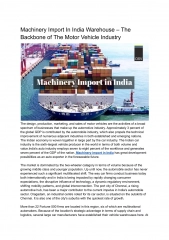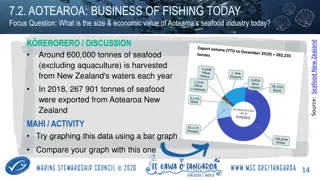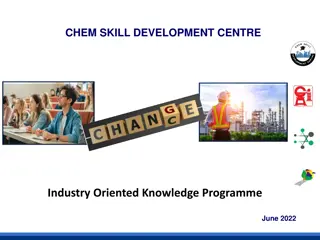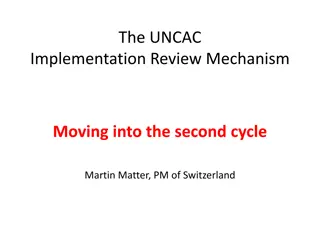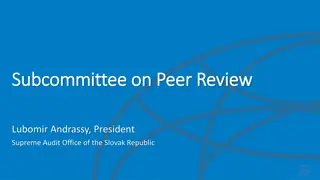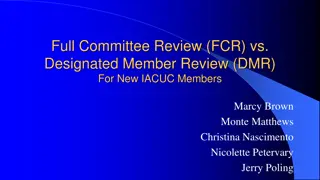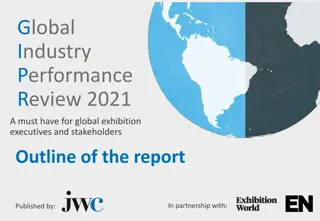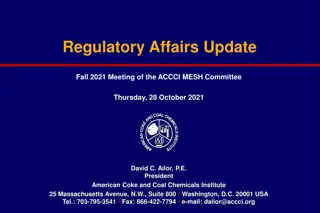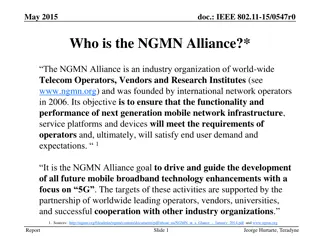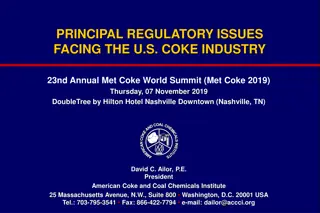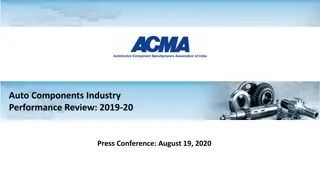
Industry and Development Review Questions
Explore review questions on industry and development, covering topics such as maquiladoras, country characteristics, oil-producing zones, and primary activities. Test your knowledge in geography, economics, and social studies with these insightful questions.
Download Presentation

Please find below an Image/Link to download the presentation.
The content on the website is provided AS IS for your information and personal use only. It may not be sold, licensed, or shared on other websites without obtaining consent from the author. If you encounter any issues during the download, it is possible that the publisher has removed the file from their server.
You are allowed to download the files provided on this website for personal or commercial use, subject to the condition that they are used lawfully. All files are the property of their respective owners.
The content on the website is provided AS IS for your information and personal use only. It may not be sold, licensed, or shared on other websites without obtaining consent from the author.
E N D
Presentation Transcript
DEVELOPMENT AND INDUSTRY REVIEW QUESTIONS
THE ESTABLISHMENT OF MAQUILADORAS BY UNITED STATES CORPORATIONS FOR THE PRODUCTION OF ELECTRONICS COMPONENTS IS AN EXAMPLE OF WHICH OF THE FOLLOWING? a. Exploitation of union labor b. Industrialization c. New international division of labor d. Tertiary economic activity e. Colonialism
THE ESTABLISHMENT OF MAQUILADORAS BY UNITED STATES CORPORATIONS FOR THE PRODUCTION OF ELECTRONICS COMPONENTS IS AN EXAMPLE OF WHICH OF THE FOLLOWING? a. Exploitation of union labor b. Industrialization c. New international division of labor d. Tertiary economic activity e. Colonialism
WHICH OF THE FOLLOWING CHARACTERISTICS APPLIES TO MORE- DEVELOPED COUNTRIES? a. Early stages of epidemiological transition b. Long life expectancies c. High total fertility rates d. Rapid population growth e. Early stages of the demographic transition
WHICH OF THE FOLLOWING CHARACTERISTICS APPLIES TO MORE- DEVELOPED COUNTRIES? a. Early stages of epidemiological transition b. Long life expectancies c. High total fertility rates d. Rapid population growth e. Early stages of the demographic transition
ALL OF THE FOLLOWING CONTAIN MAJOR OIL-PRODUCING ZONES EXCEPT THE a. Caspian Sea b. North Sea c. Persian Gulf d. Gulf of Mexico e. Gulf of California
ALL OF THE FOLLOWING CONTAIN MAJOR OIL-PRODUCING ZONES EXCEPT THE a. Caspian Sea b. North Sea c. Persian Gulf d. Gulf of Mexico e. Gulf of California
WHICH OF THE FOLLOWING CAN BE CATEGORIZED AS A PRIMARY ACTIVITY? a. Engineering b. Coal mining c. Teaching d. Car manufacturing e. Politics
WHICH OF THE FOLLOWING CAN BE CATEGORIZED AS A PRIMARY ACTIVITY? a. Engineering b. Coal mining c. Teaching d. Car manufacturing e. Politics
THE CLASSIC MODEL OF INDUSTRIAL LOCATION THEORY SUGGESTS THAT THE PRIMARY CONSIDERATION IN THE LOCATION OF AN INDUSTRIAL SITE IS WHICH OF THE FOLLOWING? a. The institutional structure of the firm b. The cost to produce the product c. The cost of raw materials d. The cost of transportation e. The location of the market
THE CLASSIC MODEL OF INDUSTRIAL LOCATION THEORY SUGGESTS THAT THE PRIMARY CONSIDERATION IN THE LOCATION OF AN INDUSTRIAL SITE IS WHICH OF THE FOLLOWING? a. The institutional structure of the firm b. The cost to produce the product c. The cost of raw materials d. The cost of transportation e. The location of the market
WHICH OF THE FOLLOWING IS THE PRIMARY GEOGRAPHIC EFFECT OF THE GLOBALIZATION OF THE ECONOMY? a. Countries have greater control over economic activity within their borders. b. More local ownership makes industries less likely to move. c. Production is increasingly concentrated in the Manufacturing Belt of the United States. d. Production is increasingly concentrated in the Rhine-Ruhr Valley of Europe. e. Production is shifted to low-cost locations in developing countries.
WHICH OF THE FOLLOWING IS THE PRIMARY GEOGRAPHIC EFFECT OF THE GLOBALIZATION OF THE ECONOMY? a. Countries have greater control over economic activity within their borders. b. More local ownership makes industries less likely to move. c. Production is increasingly concentrated in the Manufacturing Belt of the United States. d. Production is increasingly concentrated in the Rhine-Ruhr Valley of Europe. e. Production is shifted to low-cost locations in developing countries.
ALL OF THE FOLLOWING STATEMENTS ABOUT WORLDWIDE PATTERNS OF DEVELOPMENT ARE CORRECT EXCEPT a. Per capita income in the United States is higher than in China. b. The gap in per capita income between rick and poor countries has increased over time. c. On average, population growth is higher in peripheral countries than in core nations. d. The largest concentrations of the least-developed countries in the world today is in Latin America. e. Several Asian countries, so-called Asian Tigers, made enormous strides in per capita income and levels of development in the past 30 years.
ALL OF THE FOLLOWING STATEMENTS ABOUT WORLDWIDE PATTERNS OF DEVELOPMENT ARE CORRECT EXCEPT a. Per capita income in the United States is higher than in China. b. The gap in per capita income between rick and poor countries has increased over time. c. On average, population growth is higher in peripheral countries than in core nations. d. The largest concentrations of the least-developed countries in the world today is in Latin America. e. Several Asian countries, so-called Asian Tigers, made enormous strides in per capita income and levels of development in the past 30 years.
WHICH OF THE FOLLOWING IS MOST LIKELY TO BE USED BY A MARKETING FIRM SEEKING TO MAP PATTERNS OF LIFESTYLE CHARACTERISTICS IN THE UNITED STATES? a. States b. Zip codes c. Nonmetropolitan areas d. Congressional districts e. Counties
WHICH OF THE FOLLOWING IS MOST LIKELY TO BE USED BY A MARKETING FIRM SEEKING TO MAP PATTERNS OF LIFESTYLE CHARACTERISTICS IN THE UNITED STATES? a. States b. Zip codes c. Nonmetropolitan areas d. Congressional districts e. Counties
THE HIGH-TECH FIRMS OF SILICON VALLEY IN CALIFORNIA ARE CLUSTERED TOGETHER TO TAKE ADVANTAGE OF a. Cheap labor b. Economies of scale c. Access to markets d. Agglomeration effects e. High-speed transportation
THE HIGH-TECH FIRMS OF SILICON VALLEY IN CALIFORNIA ARE CLUSTERED TOGETHER TO TAKE ADVANTAGE OF a. Cheap labor b. Economies of scale c. Access to markets d. Agglomeration effects e. High-speed transportation
THE DEPENDENCY RATIO IS MOST USEFUL FOR INDICATING THE a. Reliance of a country on imported fossil fuels b. Degree of gender equality within a country c. Relationship between the total fertility rate and the infant mortality rate d. Percentage of foreign ownership within the secondary sector of a country s economy e. Relationship between the potential labor force and the remainder of a country s population
THE DEPENDENCY RATIO IS MOST USEFUL FOR INDICATING THE a. Reliance of a country on imported fossil fuels b. Degree of gender equality within a country c. Relationship between the total fertility rate and the infant mortality rate d. Percentage of foreign ownership within the secondary sector of a country s economy e. Relationship between the potential labor force and the remainder of a country s population
WHICH OF THE FOLLOWING SECTORS OF THE ECONOMY HAS GROWN THE FASTEST IN THE UNITED STATES SINCE THE MID 1970S? a. Service b. Agriculture c. Retail d. Manufacturing e. Military
WHICH OF THE FOLLOWING SECTORS OF THE ECONOMY HAS GROWN THE FASTEST IN THE UNITED STATES SINCE THE MID 1970S? a. Service b. Agriculture c. Retail d. Manufacturing e. Military
WHICH OF THE FOLLOWING BEST DESCRIBES NAFTA BETWEEN THE U.S., CANADA, & MEXICO? a. An open-border region with free movement of labor b. A multinational trade zone in which most tariffs have been eliminated c. A protectionist coalition that denies trade access from other countries d. A monetary union with a single currency e. An economic and security bloc designed to eliminate drug trafficking
WHICH OF THE FOLLOWING BEST DESCRIBES NAFTA BETWEEN THE U.S., CANADA, & MEXICO? a. An open-border region with free movement of labor b. A multinational trade zone in which most tariffs have been eliminated c. A protectionist coalition that denies trade access from other countries d. A monetary union with a single currency e. An economic and security bloc designed to eliminate drug trafficking
WHICH OF THE FOLLOWING IS AN ADVANTAGE FOR JAPANESE CORPORATIONS THAT LOCATED THEIR MANUFACTURING PLANTS IN THE U.S.? a. Freedom from Japan s overprotected distribution networks b. A wider variety of climate conditions in the United States c. Less competition in the United States than in most other countries d. Lower transportation costs and greater access to markets e. The better education labor force in the United States
WHICH OF THE FOLLOWING IS AN ADVANTAGE FOR JAPANESE CORPORATIONS THAT LOCATED THEIR MANUFACTURING PLANTS IN THE U.S.? a. Freedom from Japan s overprotected distribution networks b. A wider variety of climate conditions in the United States c. Less competition in the United States than in most other countries d. Lower transportation costs and greater access to markets e. The better education labor force in the United States
THE LITERACY RATE OF ANY GIVEN COUNTRY CORRELATES MOST CLOSELY WITH WHICH OF THE FOLLOWING? a. Per capita income b. Annual precipitation rates c. Petroleum production d. General level of intelligence e. Population density
THE LITERACY RATE OF ANY GIVEN COUNTRY CORRELATES MOST CLOSELY WITH WHICH OF THE FOLLOWING? a. Per capita income b. Annual precipitation rates c. Petroleum production d. General level of intelligence e. Population density
WITH RESPECT TO NAFTA, WHICH OF THE FOLLOWING STATEMENTS IS NOT TRUE? a. It resulted in increased trade among member nations b. It outlines an eventual supranational governing body for North America c. It led to a net trade deficit for the United States with Canada and Mexico d. It facilitated the movement of tertiary-sector industries from the United States to Mexico e. It eventually many include other Latin American countries
WITH RESPECT TO NAFTA, WHICH OF THE FOLLOWING STATEMENTS IS NOT TRUE? a. It resulted in increased trade among member nations b. It outlines an eventual supranational governing body for North America c. It led to a net trade deficit for the United States with Canada and Mexico d. It facilitated the movement of tertiary-sector industries from the United States to Mexico e. It eventually many include other Latin American countries
QUATERNARY ECONOMIC ACTIVITIES ARE THOSE THAT a. Extract natural resources from the environment b. Transfer raw materials into finished products c. Involve the collection, processing, and manipulation of information d. Involve the exchange of goods and the provision of services e. Involve the production of fresh produce for urban markets
QUATERNARY ECONOMIC ACTIVITIES ARE THOSE THAT a. Extract natural resources from the environment b. Transfer raw materials into finished products c. Involve the collection, processing, and manipulation of information d. Involve the exchange of goods and the provision of services e. Involve the production of fresh produce for urban markets
WHICH OF THE FOLLOWING COUNTRIES CONSUMES THE MOST FOSSIL FUELS PER CAPITA? a. China b. India c. Japan d. England e. The United States
WHICH OF THE FOLLOWING COUNTRIES CONSUMES THE MOST FOSSIL FUELS PER CAPITA? a. China b. India c. Japan d. England e. The United States
WHICH OF THE FOLLOWING INDUSTRIES WILL MOST LIKELY LOCATE CLOSEST TO ITS RAW MATERIAL SOURCES? a. soft-drink bottling b. Brewing c. Nickel smelting d. Baking e. Automobile assembly
WHICH OF THE FOLLOWING INDUSTRIES WILL MOST LIKELY LOCATE CLOSEST TO ITS RAW MATERIAL SOURCES? a. soft-drink bottling b. Brewing c. Nickel smelting d. Baking e. Automobile assembly
WHICH OF THE FOLLOWING MODES OF TRANSPORTATION IS CHARACTERIZED BY LOW TERMINAL COST, HIGH LINE COST, AND HIGH ROUTE FLEXIBILITY? a. Truck b. Railroad c. Shi d. Pipeline e. Airplane
WHICH OF THE FOLLOWING MODES OF TRANSPORTATION IS CHARACTERIZED BY LOW TERMINAL COST, HIGH LINE COST, AND HIGH ROUTE FLEXIBILITY? a. Truck b. Railroad c. Shi d. Pipeline e. Airplane
A CLUSTERING OF DOCTORS OFFICES AND PHARMACIES NEAR HOSPITALS IS BEST EXPLAINED BY THE BENEFITS OF a. Decentralization b. Agglomeration c. Intervening opportunity d. Balkanization e. enfranchisement
A CLUSTERING OF DOCTORS OFFICES AND PHARMACIES NEAR HOSPITALS IS BEST EXPLAINED BY THE BENEFITS OF a. Decentralization b. Agglomeration c. Intervening opportunity d. Balkanization e. enfranchisement
THE INTERNET IS RESHAPING TRADITIONAL ECONOMIC ARRANGEMENTS BY a. Reinforcing the dominance of the central business district for retail sales b. Expanding the importance of express package delivery systems c. Increasing the importance of rail transportation as compared to truck transportation d. Bringing consumers and producers into face-to-face contact. e. Created more enclosed shopping malls.
THE INTERNET IS RESHAPING TRADITIONAL ECONOMIC ARRANGEMENTS BY a. Reinforcing the dominance of the central business district for retail sales b. Expanding the importance of express package delivery systems c. Increasing the importance of rail transportation as compared to truck transportation d. Bringing consumers and producers into face-to-face contact. e. Created more enclosed shopping malls.
THE POPULARITY OF WHICH OF THE FOLLOWING IS AN EXAMPLE OF THE TREND TOWARD ECOTOURISM? a. time-share condominiums on the coast of Spain b. Ski resorts in Chile c. National parks in Costa Rica d. Recreational canals in Florida e. Artificial lakes in Texas
THE POPULARITY OF WHICH OF THE FOLLOWING IS AN EXAMPLE OF THE TREND TOWARD ECOTOURISM? a. time-share condominiums on the coast of Spain b. Ski resorts in Chile c. National parks in Costa Rica d. Recreational canals in Florida e. Artificial lakes in Texas
THE EARLY STAGES OF THE CORE- PERIPHERY MODEL DESCRIBE THE a. Relationship between the outward appearance of a place and its internal functioning b. Ways that suburban workers commute to urban workplaces. c. Relationship between the underlying structure of a society and its outward expressions d. Social and cultural differences between urban and rural people e. Relationship of power and the transfer of resources from less developed to more developed areas
THE EARLY STAGES OF THE CORE- PERIPHERY MODEL DESCRIBE THE a. Relationship between the outward appearance of a place and its internal functioning b. Ways that suburban workers commute to urban workplaces. c. Relationship between the underlying structure of a society and its outward expressions d. Social and cultural differences between urban and rural people e. Relationship of power and the transfer of resources from less developed to more developed areas
THE PROVISIONS OF THE UNITED NATIONS CONFERENCE OF THE LAW OF THE SEA GIVE COASTAL COUNTRIES NAVIGATIONAL AND ECONOMIC SOVEREIGNTY OVER WHICH OF THE FOLLOWING? a. Twelve nautical mile territorial seas zone b. Export processing zone (EPZ) c. 200 nautical mile exclusive economic zone d. Empowerment zone e. Continental shelf
THE PROVISIONS OF THE UNITED NATIONS CONFERENCE OF THE LAW OF THE SEA GIVE COASTAL COUNTRIES NAVIGATIONAL AND ECONOMIC SOVEREIGNTY OVER WHICH OF THE FOLLOWING? a. Twelve nautical mile territorial seas zone b. Export processing zone (EPZ) c. 200 nautical mile exclusive economic zone d. Empowerment zone e. Continental shelf
THE MAQUILADORAS OF NORTHERN MEXICO ARE a. Manufacturing outsourcing plants b. Illegal migrant-labor camps c. Border squatter settlements d. Organic agricultural cooperatives e. Commercial produce farms


